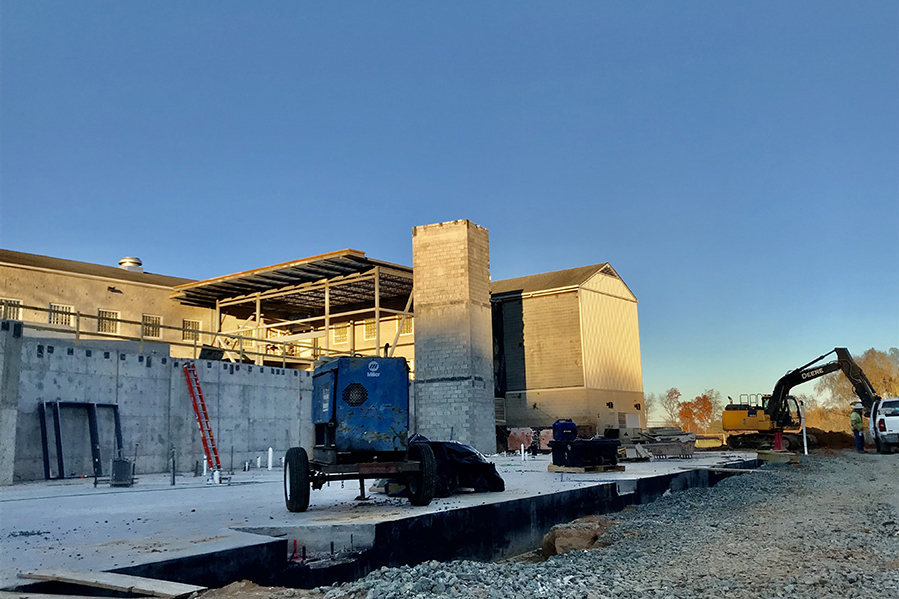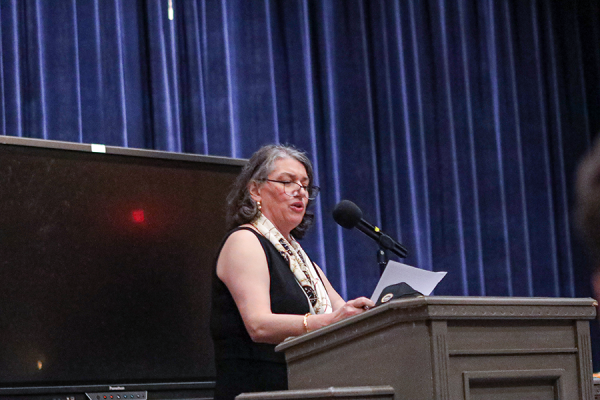Crozet Continues to Balance Growth and Infrastructure Needs
Construction continues at Crozet Elementary where ACPS plans to increase school capacity from 400 students to 680 students.
January 14, 2022
Whether for a country as a whole, or for a smaller growing community like Crozet, infrastructure is essential to the stability of a community. Without infrastructure like roads, schools, transportation systems, sewage, water, and electricity that is proportionate to a population, a society will be unable to grow and function, because the framing cannot support a larger population. It is in this way that growth and infrastructure are completely intertwined and reliant on one another. Crozet, like any developing area, is learning to effectively manage this balance.
According to the 2020 Census, the population of Crozet increased from approximately 5,565 in 2010 to 9,224 in 2020. Since the designation of Crozet as a growth area in 1971, and notably since 2004, growth in Crozet has increased exponentially due to the high demand of housing in this area in the form of established mixed-use communities, like Old Trail, and growing residential areas. As a community, Crozet will work to address issues with school capacity, pedestrian access, traffic flows, and land use, as facilitated by the Crozet Master Plan and other guiding documents.
The Crozet Master Plan is a document written by the Crozet Community Advisory Board (CCAC) and approved by the Board of Supervisors that outlines the “community’s vision for future development.” Although CCAC frames the community’s goals for the future, Crozet, being a growth area, gets all its funding from Albemarle County.
Crozet lacks updated roads and sidewalks, most centrally around the downtown area, accessible utilities, schools with spacious capacities, and renovated public spaces like parks. In recognizing the paramount need for current infrastructure in Crozet, the Master Plan asks “How can the County retrofit deficient infrastructure to fit the current and future needs of Crozet?”
Allie Pesch, the chair of CCAC and lifelong resident describes Crozet and its growth as a “victim of our own success” as infrastructure lags behind the needs of the population.
In terms of traffic, one of the most important projects to Pesch is the plans for the third connector between 250 and downtown Crozet, known as Eastern Avenue, which will serve to divert some traffic flow to decrease gridlock during rush hour. Eastern Avene will be increasingly important when, in the future, Crozet Avenue is closed for repairs.
The Master Plan also includes a provision addressing traffic issues at the intersection of Old Trail Drive and 250 and at the entrance to Henley and Brownsville by utilizing roundabouts to keep traffic moving continuously and reduce conflicts. However, as these projects require further traffic study, Pesch warns that “the traffic situation on 250 will remain the same for the foreseeable future.”
In terms of other infrastructure prerogatives, the Master Plan is composed of catalyst and long-term project lists. It prioritizes a multi-use path along 240 and potentially 250, increasing the walkability and bikeability of downtown Crozet, updates to Claudius Crozet Park, and improved trails throughout public lands. Generally, Pesch feels that the Crozet Master Plan is “pretty good in terms of infrastructure goals and priorities, so it is just a matter of getting them funded.”
As increasing numbers of families move into the Crozet growth area, school systems are consequently overwhelmed with populations of students that will eventually inundate school capacities.
As of now, Principal Jennifer Sublette says that Western as a school is “pretty comfortable in our building… We’ve got places to put everyone but we’re tight.” At the beginning of the school year, Western had 1,141 enrolled students with a max capacity of 1,200 students, even with the addition of the pods.
In lieu of building additional schools, which would lower the budget, Albemarle County and the School Board are working off a “center model.” Students are outsourced to other institutions like Center I, CATEC, and PVCC, thereby decreasing the number of students simultaneously in the building, but still maintaining the base high school experience. The center model also allows ACPS to diversify its curriculum and provide students with a broader spread of options. Building a new school would also result in a highly modernized school while the three other high schools lack refurbishing.
Jay Thomas, Director of Secondary Education, notes that the most important continuity in the center model is “How do kids keep their base identity?… You went to Henley. Then you come here, you have a cohort of kids and this allegiance to the Western feeder pattern, so you don’t want to lose that.”
Ultimately, because there are set boundaries to the growth area, the growth will eventually slow as long as density regulations remain the same, restricting developers from building more units on plots of land that are the same size. Additionally, should the perimeter of the growth area be expanded, growth in Crozet will continue, requiring further development of infrastructure.
Ultimately, both growth itself and expansion of infrastructure will result in changes to Crozet but Sublette hopes that as Crozet evolves “there’s a way, even as the town gets larger, to hold on to some of that old town feel.”















